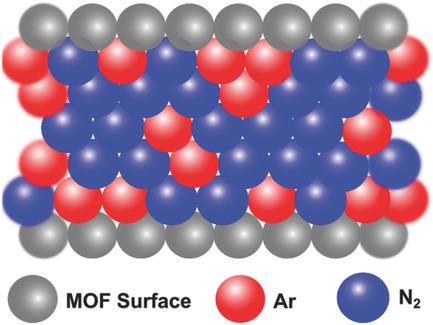当前位置:
X-MOL 学术
›
Small Methods
›
论文详情
Our official English website, www.x-mol.net, welcomes your feedback! (Note: you will need to create a separate account there.)
Evaluation of the BET Theory for the Characterization of Meso and Microporous MOFs
Small Methods ( IF 12.4 ) Pub Date : 2018-08-16 , DOI: 10.1002/smtd.201800173 Filip Ambroz 1 , Thomas J. Macdonald 1 , Vladimir Martis 2 , Ivan P. Parkin 1
Small Methods ( IF 12.4 ) Pub Date : 2018-08-16 , DOI: 10.1002/smtd.201800173 Filip Ambroz 1 , Thomas J. Macdonald 1 , Vladimir Martis 2 , Ivan P. Parkin 1
Affiliation

|
Surface area determination with the Brunauer–Emmett–Teller (BET) method is a widely used characterization technique for metal–organic frameworks (MOFs). Since these materials are highly porous, the use of the BET theory can be problematic. Several researchers have evaluated the BET method to gain insights into the usefulness of the obtained results and interestingly, their findings are not always consistent. In this review, the suitability of the BET method is discussed for MOFs that have a diverse range of pore widths below the diameters of N2 or Ar and above 20 Å. In addition, the surface area of MOFs that are obtained by implementing different approaches, such as grand canonical Monte Carlo simulations, calculations from the crystal structures or based on experimental N2, Ar, or CO2 adsorption isotherms, are compared and evaluated. Inconsistencies in the state‐of‐the‐art are also noted. Based on the current literature, an overview is provided of how the BET method can give useful estimations of the surface areas for the majority of MOFs, but there are some crucial and specific exceptions which are highlighted in this review.
中文翻译:

BET理论对介孔和微孔MOF表征的评估
用布鲁诺尔-埃默特-泰勒(BET)方法进行表面积测定是金属-有机骨架(MOF)广泛使用的表征技术。由于这些材料是高度多孔的,因此使用BET理论可能会出现问题。几位研究人员评估了BET方法,以深入了解所获得结果的有用性,有趣的是,他们的发现并不总是一致的。在这篇综述中,讨论了BET方法对MOF的适用性,这些MOF的孔宽度在N 2或Ar的直径以下且在20Å以上。此外,通过实施不同方法(例如,大经典的蒙特卡洛模拟,从晶体结构计算或基于实验性N 2,Ar或CO)获得的MOF表面积比较和评估2个吸附等温线。还指出了最新技术中的不一致之处。根据当前的文献,概述了BET方法如何对大多数MOF的表面积进行有用的估计,但本文中重点介绍了一些关键和特定的例外情况。
更新日期:2018-08-16
中文翻译:

BET理论对介孔和微孔MOF表征的评估
用布鲁诺尔-埃默特-泰勒(BET)方法进行表面积测定是金属-有机骨架(MOF)广泛使用的表征技术。由于这些材料是高度多孔的,因此使用BET理论可能会出现问题。几位研究人员评估了BET方法,以深入了解所获得结果的有用性,有趣的是,他们的发现并不总是一致的。在这篇综述中,讨论了BET方法对MOF的适用性,这些MOF的孔宽度在N 2或Ar的直径以下且在20Å以上。此外,通过实施不同方法(例如,大经典的蒙特卡洛模拟,从晶体结构计算或基于实验性N 2,Ar或CO)获得的MOF表面积比较和评估2个吸附等温线。还指出了最新技术中的不一致之处。根据当前的文献,概述了BET方法如何对大多数MOF的表面积进行有用的估计,但本文中重点介绍了一些关键和特定的例外情况。


























 京公网安备 11010802027423号
京公网安备 11010802027423号